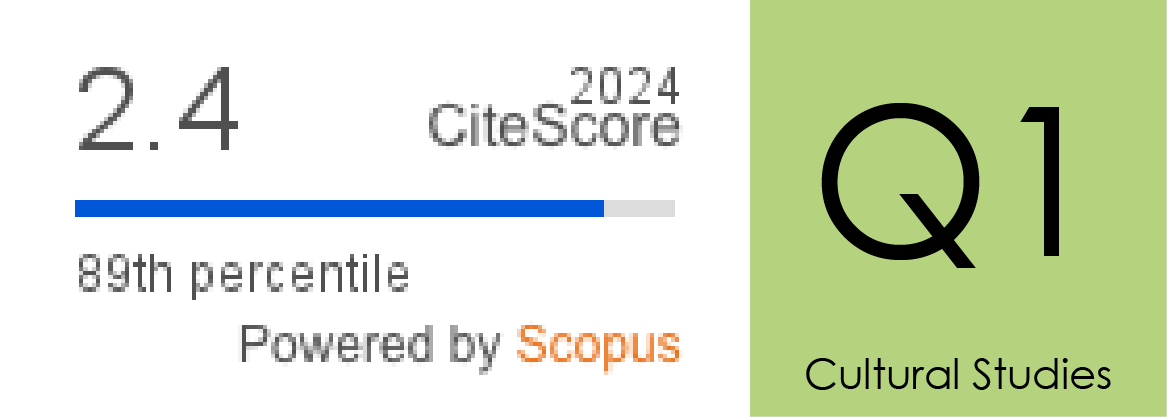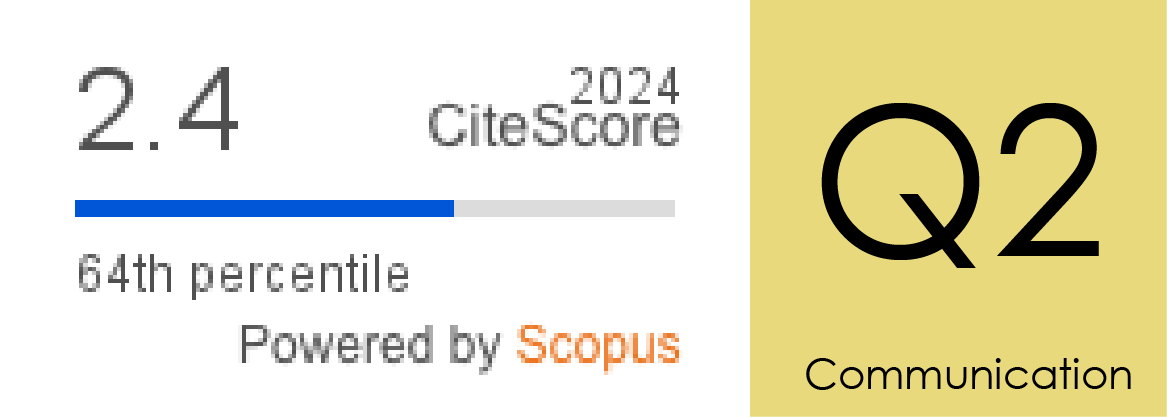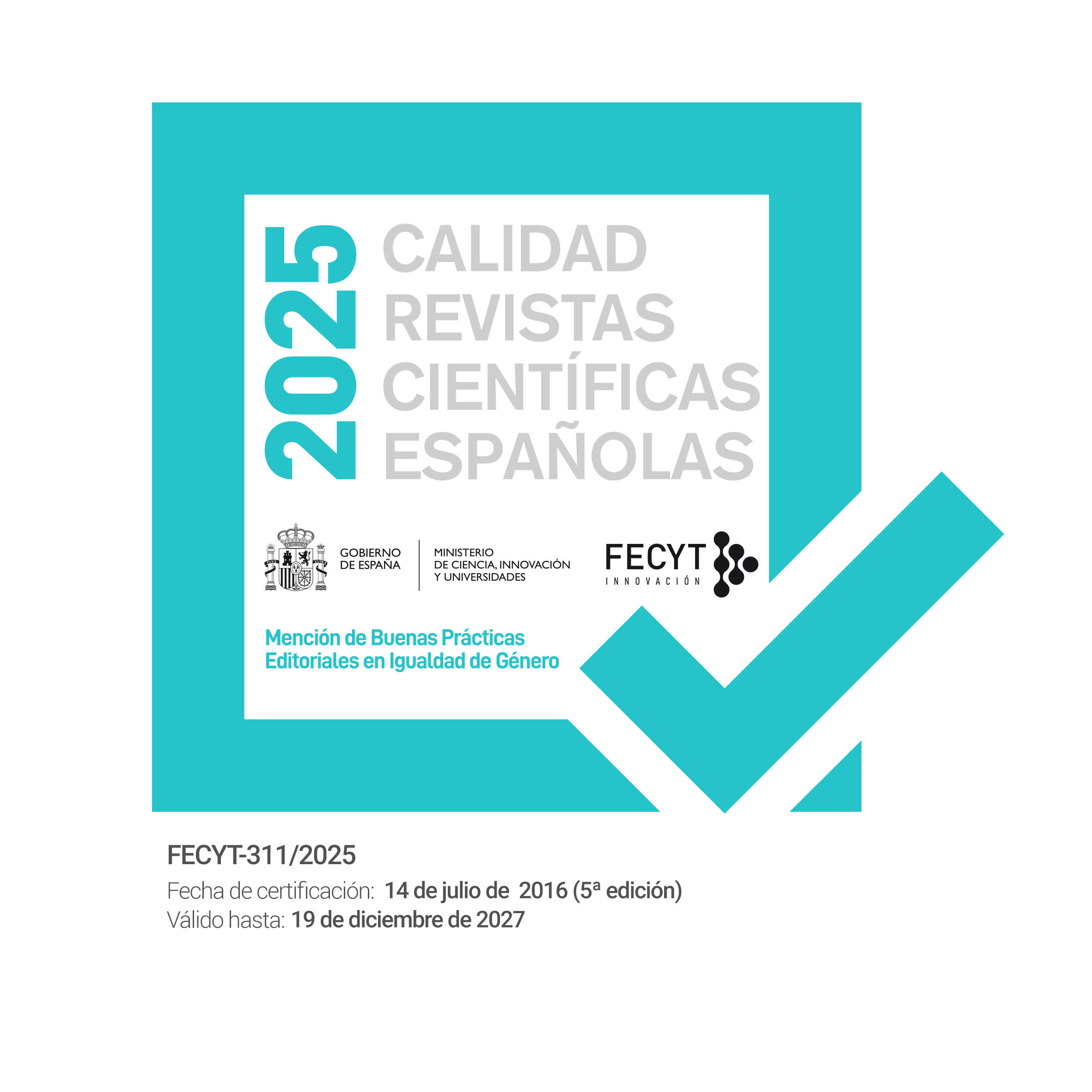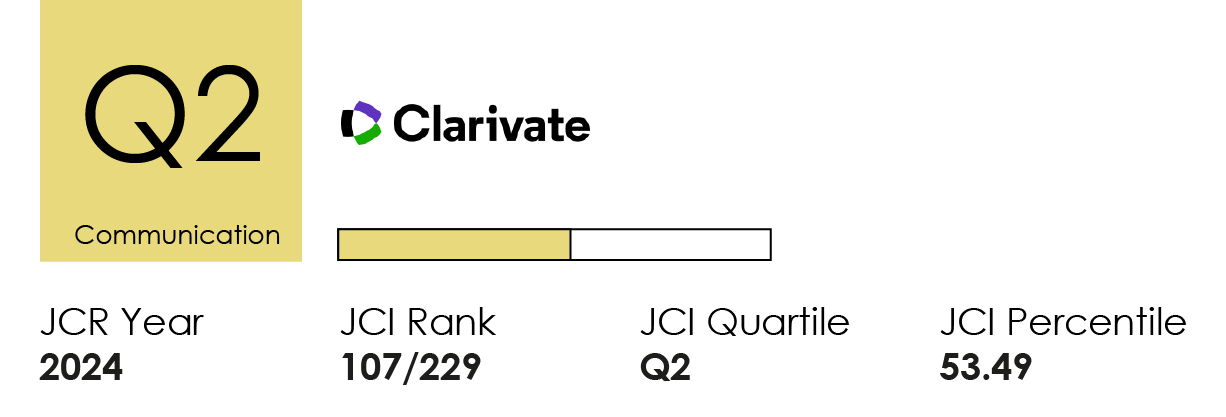Efectos del nombre de la marca sobre el comportamiento: el caso de la contrapublicidad del alcohol
DOI:
https://doi.org/10.14198/MEDCOM.24576Palabras clave:
Alcohol, contrapublicidad, marcas, publicidad, teoría de la señalizaciónResumen
La inversión mundial en publicidad de bebidas alcohólicas es elevada. En cambio, son escasas las campañas para reducir el consumo de alcohol entre los jóvenes. En este contexto, se ha decidido explorar el papel de distintos tipos de marcas, entendidas como señales, para prevenir el consumo de alcohol en anuncios de servicio público o contrapublicidad. Este estudio se ha enmarcardo en dos teorías: la teoría de la señalización y la teoría de la sensibilización a los incentivos. Su objetivo fue conocer los efectos de tres marcas diferentes sobre el comportamiento real en el consumo de alcohol entre jóvenes. Las marcas correspondieron a: un grupo de acción comunitaria, una cerveza ficticia y una agencia gubernamental. Se llevó a cabo un experimento en dos etapas: 1) 106 universitarios escucharon un anuncio radiofónico respaldado por cada marca, cuyo objetivo era prevenir el consumo de alcohol alertando sobre sus consecuencias negativas y; 2) se observó la decisión de consumo real de alcohol en las 24 horas siguientes a la audición del anuncio. En su conjunto, los resultados no confirmaron la teoría de la señalización de la contrapublicidad, aunque mostraron un comportamiento diferente según el sexo (los hombres beben más que las mujeres). Sin embargo se avaló la teoría de la sensibilización a los incentivos, ya que se hallaron diferencias en función de los hábitos de consumo. El artículo concluye con la discusión de los resultados y apunta como una futura línea de investigación el papel central de la creatividad en los mensajes de contrapublicidad.Financiación
Dep. Publicitat, Relacions Públiques i Comunicació AudiovisualCitas
Agostinelli, G., & Grube, J. W. (2002). Alcohol counter-advertising and the media. Alcohol Research & Health, 26(1),15-21. https://shorturl.at/uFKMW
Alcohol and Public Policy Group [APPG]. (2010). Alcohol: no ordinary commodity –a summary of the second edition. Addiction, 105(5), 769-779. http://doi.org/10.1111/j.1360-0443.2010.02945.x
Babor, T. F., Robaina, K., Brown, K., Noel, J., Cremonte, M., Pantani, D., & Pinsky, I. (2018). Is the alcohol industry doing well by ‘doing good’? Findings from a content analysis of the alcohol industry’s actions to reduce harmful drinking. BMJ Open, 8(10). http://doi.org/10.1136/bmjopen-2018-024325
Bai, X. (2015). A study of the effect of product information cues on consumers' purchase decision-making of unknown brands [PhD thesis, University of Tasmania]. https://shorturl.at/hkENP
Berey, B. L., Loparco, C., Leeman, R. F., & Grube, J. W. (2017). The myriad influences of alcohol advertising on adolescent drinking. Current Addiction Reports, 4(2), 172–183. http://doi.org/10.1007/s40429-017-0146-y
Bigné, E., Currás, R., & Sánchez, I. (2009). Brand credibility in cause-related marketing: the moderating role of consumer values. Journal of Product & Brand Management, 18(6), 437-447. http://doi.org/10.1108/10610420910989758
Brown, K. G., Stautz, K., Hollands, G. J., Winpenny, E. M., & Marteau, T. M. (2016). The cognitive and behavioural impact of alcohol promoting and alcohol warning advertisements: an experimental study. Alcohol and Alcoholism, 51(3), 354–362. http://doi.org/10.1093/alcalc/agv104
Chaiken, S., & Ledgerwood, A. (2012). A theory of heuristic and systematic information processing. In P. A. M. Van Lange, A. W. Kruglanski, & E. T. Higgins (Eds.), Handbook of theories of social psychology (pp. 246-266). Sage.
Comisión de Publicidad y Comunicación Institucional. (2021). Plan 2021 de Publicidad y Comunicación Institucional. Ministerio de la Presidencia. https://shorturl.at/JKUX4
Comisión de Publicidad y Comunicación Institucional. (2022). Plan 2022 de Publicidad y Comunicación Institucional. Ministerio de la Presidencia. https://shorturl.at/hqrP1
Connelly, B. L., Certo, S. T., Ireland, R. D., & Reutzel, C. R. (2011). Signaling theory: A review and assessment. Journal of Management, 37(1), 39-67. http://doi.org/10.1177/0149206310388419
Darby, M. R. & Karni E. (1973). Free competition and the optimal amount of fraud. Journal of Law and Economics, 16(1), 67-88. http://doi.org/10.1086/466756
Durcikova, A., & Gray, P. (2009). How knowledge validation processes affect knowledge contribution. Journal of Management Information Systems, 25(4), 81-108. http://doi.org/10.2753/MIS0742-1222250403
ESPAD Group. (2016). ESPAD report 2015 results from the European school survey project on alcohol and other drugs. European Monitoring Centre for Drugs and Drug Addiction. https://shorturl.at/nKQV8
Esser, M. B., Bao, J., Jernigan, D. H., & Hyder, A. A. (2016). Evaluation of the evidence base for the alcohol industry's actions to reduce drink driving globally. American Journal of Public Health, 106(4), 707–713. http://doi.org/10.2105/AJPH.2015.303026
Evans, W. D., Blitstein, J., Hersey, J. C., Renaud, J., & Yaroch, A. L. (2008). Systematic review of public health branding. Journal of Health Communication, 13(8), 721-741. http://doi.org/10.1080/10810730802487364
Evans, W. D., Blitstein, J., Vallone, D., Post, S., & Nielsen, W. (2015). Systematic review of health branding: growth of a promising practice. Translational Behavioral Medicine, 5(1), 24-36. http://doi.org/10.1007/s13142-014-0272-1
Evans, W. D., & McCormack, L. (2008). Applying social marketing in health care: communicating evidence to change consumer behavior. Medical decision making: an international journal of the Society for Medical Decision Making, 28(5), 781–792. http://doi.org/10.1177/0272989X08318464
Evans, W. D., Uhrig, J., Davis, K., & McCormack, L. (2009). Efficacy methods to evaluate health communication and marketing campaigns. Journal of Health Communication, 14(4),
-330. https://doi:10.1080/10810730902872234
Goodall, C. E., & Slater, M. D. (2010). Automatically activated attitudes as mechanisms for message effects: the case of alcohol advertisements. Communication Research, 37(5), 620–643. https://doi:10.1177/0093650210374011
Goldenberg, J., Mazursky, D., & Solomon, S. (1999). The fundamental templates of quality ads. Marketing Science, 18(3), 195-462. http://doi.org/10.1287/mksc.18.3.333
Gupta, H., Pettigrew, S., Lam, T., & Tait, R. J. (2016). A systematic review of the impact of exposure to internet-based alcohol-related content on young people's alcohol use behaviours. Alcohol and Alcoholism, 51(6), 763-771. http://doi.org/10.1093/alcalc/agw050
Hauser, D. J., Ellsworth, P. C., & Gonzalez, R. (2018). Are manipulation checks necessary? Frontiers in Psychology, 9, 998. http://doi.org/10.3389/fpsyg.2018.00998
Helm, C., & Evans, L. (2016). Understanding the effect of television advertising on women's attitudes and purchase intentions towards beer: a study of three major brands. In Academy of Marketing Brand SIG 11th Global Brand Conference. University of Bradford. https://shorturl.at/asxXY
Huang, J. H., DeJong, W., Schneider, S. K., & Towvim, L. G. (2006). Measuring college student drinking: illustrating the feasibility of a composite drinking scale. Substance Abuse, 27(1-2), 33–45. http://doi.org/10.1300/J465v27n01_05
Idoko, E. C., Nkamnebe, A. D., Ireneus, N. C., & Okoye, V. I. (2013). Effects of intrinsic and extrinsic product cues on consumers’ purchase intention: a study of alcoholic beverage consumers in a developing country metropolitan city. Researchers World, 4(3), 1-11. http://shorturl.at/aFKL9
Infoadex. (2021). Estudio Infoadex de la inversión publicitaria en España. Infoadex.
Jernigan, D., Noel, J., Landon, J., Thornton, N., & Lobstein, T. (2017). Alcohol marketing and youth alcohol consumption: a systematic review of longitudinal studies published since 2008. Addiction, 112(Suppl. 1), 7–20. http://doi.org/10.1111/add.13591
Jones, S. C., Wyatt, A., & Daube, M. (2016). Smokescreens and beer goggles: How alcohol industry CSM protects the industry. Social Marketing Quarterly, 22(4), 264-279. http://doi.org/10.1177/1524500415621558
Kane, J. V., & Barabas, J. (2019). No harm in checking: using factual manipulation checks to assess attentiveness in experiments. American Journal in Political Science, 63(1), 234-249. http://doi.org/10.1111/ajps.12396
Keller, L. K. (1998). Branding perspectives on social marketing. Advances in Consumer Research, 25, 299-302. https://shorturl.at/xy236
Kersbergen, I., & Field, M. (2017). Visual attention to alcohol cues and responsible drinking statements within alcohol advertisements and public health campaigns: Relationships with drinking intentions and alcohol consumption in the laboratory. Psychology of addictive behaviors: journal of the Society of Psychologists in Addictive Behaviors, 31(4), 435-446. http://doi.org/10.1037/adb0000284
Kim, Y., & Park, S. Y. (2018). Promoting public health or underlying business interests? The effectiveness (or ineffectiveness) of responsible drinking social causes by the alcohol industry versus non-profits. Journal of Promotion Management, 24(6), 774-797. http://doi.org/10.1080/10496491.2017.1408524
Kirby, S.D. (2001). Focus on branding: Introduction and overview. Social Marketing Quarterly, 7(2), 4-7. http://doi.org/10.1080/15245004.2001.9961149
Kirmani A., & Rao, A. R. (2000). No pain, no gain: A critical review of the literature on signaling unobservable product quality. Journal of Marketing, 64(2), 66-79. http://doi.org/10.1509/jmkg.64.2.66.18000
Kotler, P., Roberto, E., & Lee, N. (2002). Social marketing: Improving the quality of life. Sage
Publications.
Lefebvre, R.C. (2013). Social marketing and social change. Wiley.
Maheswaran, D., Mackie, D. M., & Chaiken, S. (1992). Brand name as a heuristic cue: The effects of task importance and expectancy confirmation on consumer judgments. Journal of Consumer Psychology, 1(4), 317-336. http://doi.org/10.1016/S1057-7408(08)80058-7
McDermott, L., Stead, M., & Hastings, G. (2005). What is and what is not social marketing: the challenge of reviewing the evidence Journal of Marketing Management, 21(5-6), 545-553. http://doi.org/10.1362/0267257054307408
McDivitt, J. (2003). Is there a role for branding in social marketing? Social Marketing Quarterly, 9(3), 11-17. http://doi.org/10.1080/15245000309111
Mialon, M., & McCambridge, J. (2018). Alcohol industry corporate social responsibility initiatives and harmful drinking: a systematic review. European Journal of Public Health, 28(4), 664–673. http://doi.org/10.1093/eurpub/cky065
Moss, A. C., Albery, I. P., Dyer, K. R., Frings, D., Humphreys, K., Inkelaar, T., Harding, E., & Speller, A. (2015). The effects of responsible drinking messages on attentional allocation and drinking behaviour. Addictive Behaviors, 44, 94–101. http://doi.org/10.1016/j.addbeh.2014.11.035
Myrick, H., Anton, R. F., Li, X., Henderson, S., Drobes, D., Voronin, K., & George, M. S. (2004). Differential brain activity in alcoholics and social drinkers to alcohol cues: relationship to craving. Neuropsychopharmacology: official publication of the American College of Neuropsychopharmacology, 29(2), 393–402. http://doi.org/10.1038/sj.npp.1300295
Noel, J. K., Sammartino, C. J., & Rosenthal, S. R. (2020). Exposure to digital alcohol marketing and alcohol use: A systematic review. Journal of Studies on Alcohol and Drugs, Supplement, Suppl. 19, 57–67. http://doi.org/10.15288/jsads.2020.s19.57
Pantani, D., Peltzer, R., Cremonte, M., Robaina, K., Babor, T., & Pinsky, I. (2017). The marketing potential of corporate social responsibility activities: the case of the alcohol industry in Latin America and the Caribbean. Addiction, 112(Suppl. 1), 74–80. http://doi.org/10.1111/add.13616
Perona, J. J., Barbeito, M. L., y Fajula. A. (2014). Los jóvenes ante la sono-esfera, dispositivos y hábitos de consumo sonoro. Comunicación y Sociedad, 27(1), 205-224. https://shorturl.at/ghHS5
Robaina, K., Brown, K., Babor, T. F., & Noel, J. K. (2018). Alcohol industry actions to reduce harmful drinking in Europe: public health or public relations? Public Health Panorama, 4(3), 341-349. https://shorturl.at/djvx3
Robinson, T. E., & Berridge, K. C. (2001). Incentive-sensitization and addiction. Addiction, 96(1), 103–114. http://doi.org/10.1046/j.1360-0443.2001.9611038.x
Rosengren, S., Eisend, M., Koslow, S., & Dahlen, M. (2020). A Meta-analysis of when and how advertising creativity works. Journal of Marketing, 84(6), 39-56. http://doi.org/10.1177/0022242920929288
Ross, C. S., Maple, E., Siegel, M., DeJong, W., Naimi, T. S., Ostroff, J., Padon, A. A., Borzekowski, D. L., & Jernigan, D. H. (2014a). The relationship between brand-specific alcohol advertising on television and brand-specific consumption among underage youth. Alcoholism, Clinical and Experimental Research, 38(8), 2234–2242. http://doi.org/10.1111/acer.12488
Ross, C. S., Maple, E., Siegel, M., DeJong, W., Naimi, T. S., Padon, A. A., Borzekowski, D. L., & Jernigan, D. H. (2015). The relationship between population-level exposure to alcohol advertising on television and brand-specific consumption among underage youth in the US. Alcohol and Alcoholism, 50(3), 358–364. http://doi.org/10.1093/alcalc/agv016
Ross, C. S., Ostroff, J., Siegel, M. B., DeJong, W., Naimi, T. S., & Jernigan, D. H. (2014b). Youth alcohol brand consumption and exposure to brand advertising in magazines. Journal of Studies on Alcohol and Drugs, 75(4), 615–622. http://doi.org/10.15288/jsad.2014.75.615
Rothman, A. J., Bartels, R. D., Wlaschin, J., & Salovey, P. (2006). The strategic use of gain- and loss-framed messages to promote healthy behavior: how theory can inform practice. Journal of Communication, 56(Suppl. 1), 202-220. http://doi.org/10.1111/j.1460-2466.2006.00290.x
Salciuviene, L., Ghauri, P. N., Streder, R. S., & De Mattos, C. (2010). Do brand names in a foreign language lead to different brand perceptions? Journal of Marketing Management, 26(11), 1037-1056. http://doi.org/10.1080/0267257X.2010.508976
Sargent, J. D., & Babor, T. F. (2020). The relationship between exposure to alcohol marketing and underage drinking is causal. Journal of Studies on Alcohol and Drugs, Suppl. 19, 113–124. http://doi.org/10.15288/jsads.2020.s19.113
Scott, S., Muirhead, C., Shucksmith, J., Tyrrell, R., & Kaner, E. (2017). Does industry-driven alcohol marketing influence adolescent drinking behaviour? A systematic review. Alcohol and Alcoholism, 52(1), 84-94. http://doi.org/10.1093/alcalc/agw085
Shin, Y. J., Miller-Day, M., Hecht, M. L., & Krieger, J. L. (2018). Entertainment–education videos as a persuasive tool in the substance use prevention intervention “keepin’ it REAL”. Health Communication, 33(7), 896-906. http://doi.org/10.1080/10410236.2017.1321163
Siegfried, N., Pienaar, D. C., Ataguba, J. E., Volmink, J., Kredo, T., Jere, M., & Parry, C. D. (2014). Restricting or banning alcohol advertising to reduce alcohol consumption in adults and adolescents. The Cochrane Database of Systematic Reviews, 11. http://doi.org/10.1002/14651858.CD010704.pub2
Spence, M. (2002). Signaling in retrospect and the informational structure of markets. American Economic Review, 92(3), 434-459. https://shorturl.at/mnRU1
Statista. (2017). Industry sectors ranked by advertising expenditure in Spain in 2015. https://shorturl.at/ptvI6
Stautz, K., Brown, K. G., King, S. E., Shemilt, I., & Marteau, T. M. (2016). Immediate effects of alcohol marketing communications and media portrayals on consumption and cognition: a systematic review and meta-analysis of experimental studies. BMC Public Health, 16, 465. http://doi.org/10.1186/s12889-016-3116-8
Stautz, K., & Marteau, T. M. (2016). Viewing alcohol warning advertising reduces urges to drink in young adults: an online experiment. BMC Public Health, 16, 530. http://doi.org/10.1186/s12889-016-3192-9
Szykman, L. R., Bloom, P. N., & Blazing, J. (2004). Does corporate sponsorship of a socially-oriented message make a difference? An investigation of the effects of sponsorship identity on responses to an anti-drinking and driving message. Journal of Consumer Psychology, 14(1-2), 13-20. http://doi.org/10.1207/s15327663jcp1401&2_3
Tapert, S. F., Cheung, E. H., Brown, G. G., Frank, L. R., Paulus, M. P., Schweinsburg, A. D., Meloy, M. J., & Brown, S. A. (2003). Neural response to alcohol stimuli in adolescents with alcohol use disorder. Archives of General Psychiatry, 60(7), 727–735. http://doi.org/10.1001/archpsyc.60.7.727
World Health Organization / Organización Mundial de la Salud [OMS]. (2018). Global status report on alcohol and health 2018. WHO. https://shorturl.at/rJPXZ
Young, B., Lewis, S., Katikireddi, S. V., Bauld, L., Stead, M., Angus, K., Campbell, M., Hilton, S., Thomas, J., Hinds, K., Ashie, A., & Langley, T. (2018). Effectiveness of mass media campaigns to reduce alcohol consumption and harm: a systematic review. Alcohol and Alcoholism, 53(3), 302–316. http://doi.org/10.1093/alcalc/agx094
Descargas
Publicado
Cómo citar
Número
Sección
Licencia
Derechos de autor 2024 David Roca Correa, Patrícia Lázaro Pernias, Alfonso González Quesada

Esta obra está bajo una licencia internacional Creative Commons Atribución 4.0.
Los autores y autoras que publican en esta revista están de acuerdo con los siguientes términos:
1 Derechos de autor. Los autores y autoras conservan sus derechos de autor, aunque ceden a la revista de forma no exclusiva los derechos de explotación (reproducción, distribución, comunicación pública y transformación) y garantizan a esta el derecho de primera publicación de su trabajo, el cual estará simultáneamente sujeto a la licencia indicada en punto 2. Los autores pueden establecer otros acuerdos adicionales para la distribución no exclusiva de la versión de la obra publicada en la revista, siempre que exista un reconocimiento de su publicación inicial en esta revista.
© Los autores.
2 Licencia. Los trabajos se publican en la revista sujetos a la licencia de Reconocimiento 4.0 Internacional de Creative Commons (CC BY 4.0); los términos se pueden consultar en https://creativecommons.org/licenses/by/4.0/
Esta licencia permite a terceros compartir (copiar y redistribuir el material en cualquier medio o formato) y adaptar (remezclar, transformar y crear a partir del material para cualquier finalidad, incluso comercial), siempre que se reconozca la autoría y la primera publicación en esta revista (Revista Mediterránea de Comunicación (RMC) / Mediterranean Journal of Communication (MJC), Universidad de Alicante, DOI de la obra), se proporcione un enlace a la licencia y se indique si se han realizado cambios en la obra.
3 Política de autoarchivo. Se recomienda a los autores que difundan sus trabajos a través de Internet para favorecer una circulación y difusión más rápidas y, con ello, un posible aumento en la citación y alcance entre la comunidad científica y académica, en las siguientes condiciones:
No se permite a los autores depositar en un repositorio institucional o temático, página web propia, etc., las versiones preprint (versión antes de ser evaluada) o postprint (versión evaluada y aceptada para su publicación) de sus trabajos antes de su publicación, pero sí el artículo final publicado (versión del editor).













